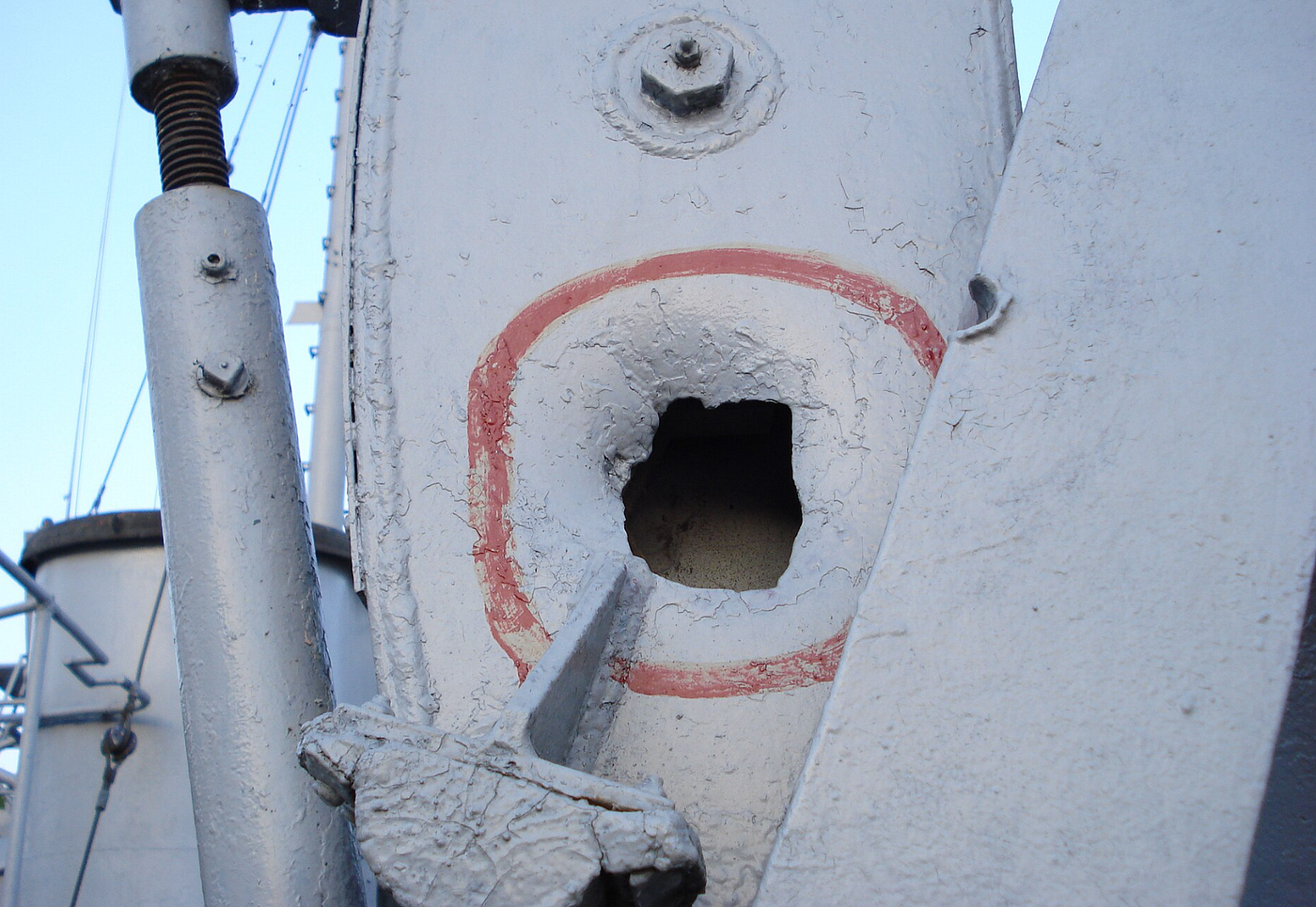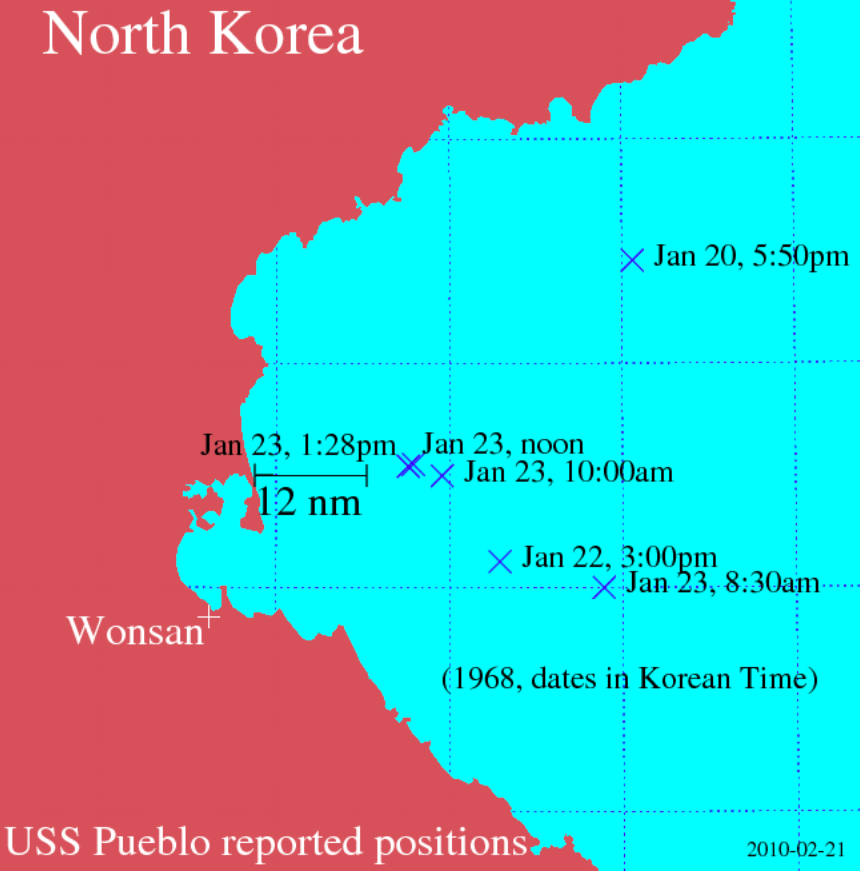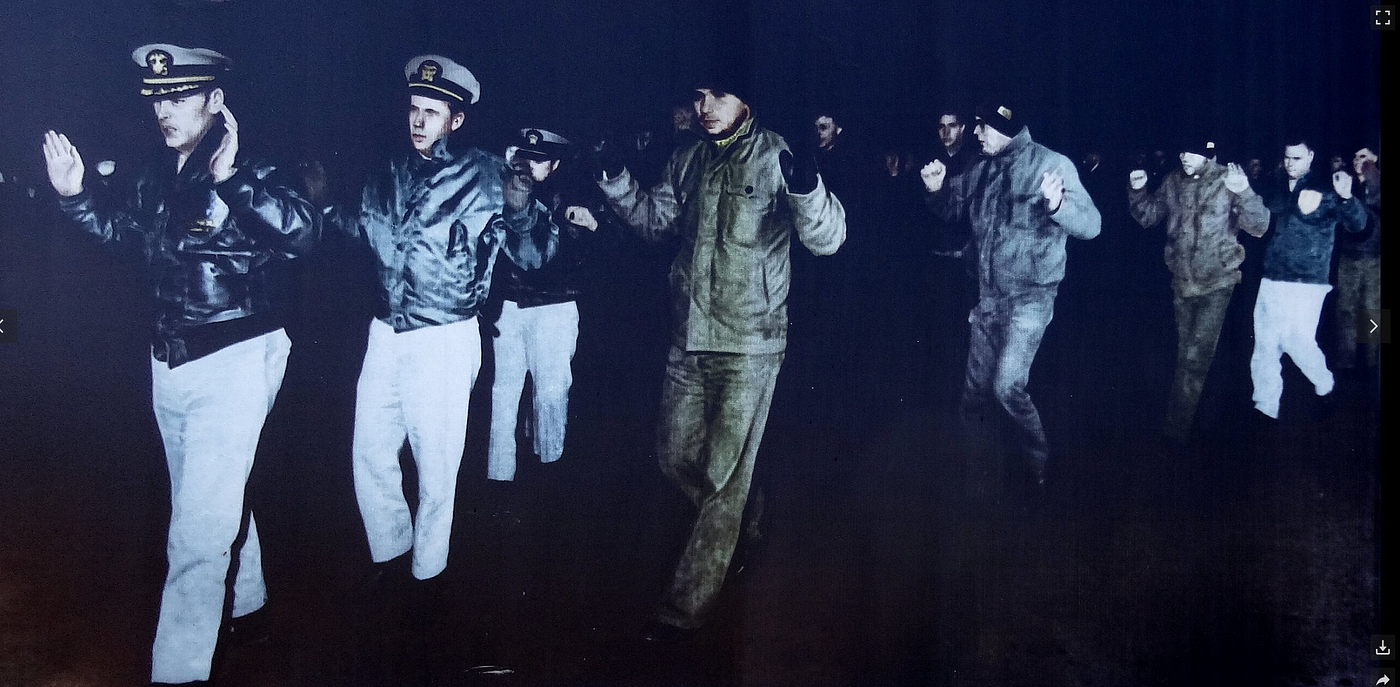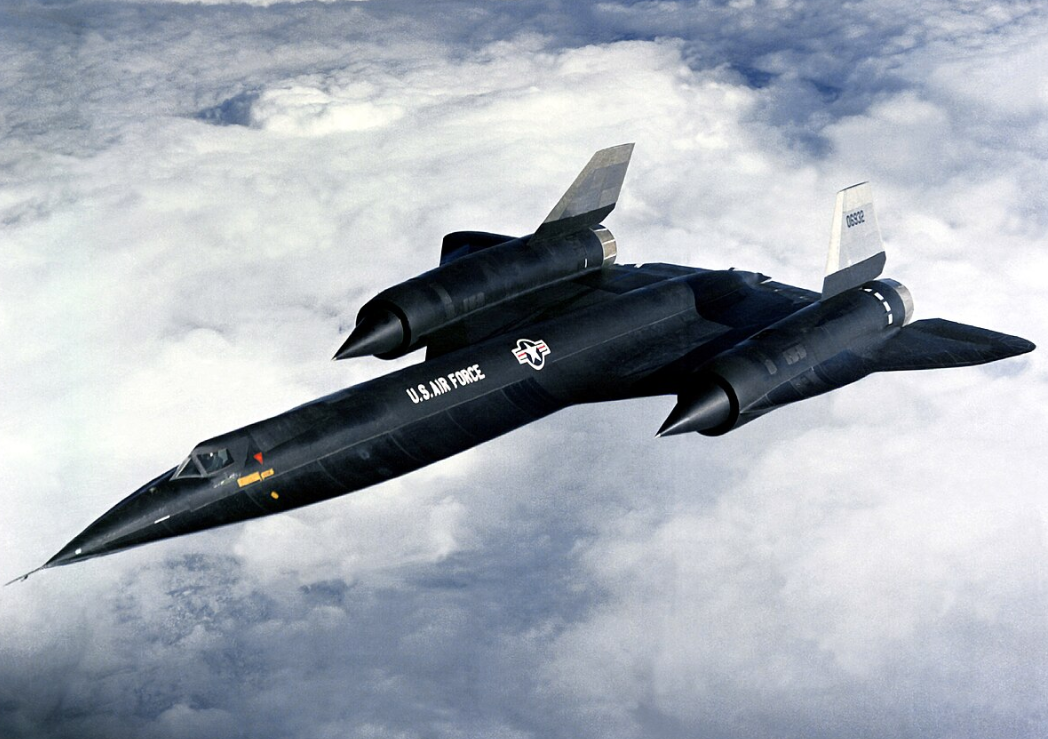Exploring Espionage: USS Pueblo (AGER-2)
Sometimes quiet and covert ends up being noisy and visible.
When we think of spies and spying, we often get visions of covert figures hiding in the shadows, as well as all manner of gadgets that aim to assist in the art of gathering intelligence. But, as we’ve seen over the series, spies aren’t just people. They are also ships, submarines and aircraft, each customised to do a specific job in a particular way.
We also think of intelligence gathering as a subtle art that is more often than not done passively. In today’s Exploring Espionage, we’re going to look at an incident that was the complete opposite of that.
Resulting in the capture of a flagged United States Navy vessel that would ultimately end up being a full-blown international incident, the tale of the USS Pueblo is the tale of spying gone wrong on multiple levels.
The Background
Laid down in 1944, USS Pueblo would initially be designated as an environmental research ship. First taking to sea in 1945, after spending some of the post-war era in storage, she would be repurposed in the aftermath of WW2 as a lightweight signals intelligence platform. Here, she would be using sensitive electrical equipment to intercept communications and military telemetry for espionage purposes.
These vessels would typically see them focusing on communications that had specific propagation characteristics, and as such, to intercept them effectively, the SIGINT vessels would be required to be in much closer proximity to the coastline where the emissions were originating.
Despite the clear dangers to the crew when undertaking such missions, these vessels were essentially unarmed, with just a few small arms systems onboard available to the crew and no heavy weaponry of any kind mounted to the ship.
This would change on the ship's first deployment to Yokosuka, Japan, where the crew would see fit to install a pair of .50 calibre machine guns in unprotected positions on the bow. Despite deciding to mount the weapons, the crew was given little training in their use and operation, a decision which would later prove to be quite unfortunate.
Pueblo would then deploy from Yokosuka to Sasebo, Japan, in preparation for intelligence gathering missions, before departing on the first such mission on the 11th January 1968. Peublo would end up being shelled heavily during the attack. Source: Wikipedia.
Peublo would end up being shelled heavily during the attack. Source: Wikipedia.
The Event
The mission would be two-fold; not only was she initially designated to spy on the activities of the Soviet navy, she was also instructed to gather signals and electronics emissions off the coastline of North Korea as a secondary objective. With the stage set, Pueblo would set out to sea on what was expected to be a routine, almost mundane intelligence gathering mission.
While the first part of her mission would be completed without incident, the crisis point would come on the 23rd of January, when Pueblo was operating off the coast of Wonson, North Korea. Operating at night and in a pre-GPS world, things would start to get dicey as Pueblo would be required to travel up to, but not over, the North Korean territorial line.
This did not go unnoticed by North Korea, and in the days prior to the event, Pueblo would be shadowed by everything ranging from civilian fishing vessels right through to naval vessels.
One ship, a modified SO-1 submarine chaser was, at one point, reported to have closed to within 4000 yards of range. After a political incident in South Korea pushed tensions to the breaking point, things would come to a head when the Naval vessel would return and directly challenge USS Pueblo and her crew of 83. Movements of the ship prior to the event. The exact location of the incident remains disputed. Source: Wikipedia.
Movements of the ship prior to the event. The exact location of the incident remains disputed. Source: Wikipedia.
Initially, Pueblo would raise the American flag and start collecting the seawater samples that would be part of her cover. In no mood to play about, the North Koreans ordered Pueblo to heave to or be subjected to naval gunfire.
With her cover blown, Pueblo would first attempt to evade, however, her WW2 era performance would leave her lacking the speed needed to make a successful escape. Worse still, the single naval ship was soon joined by an additional three torpedo boats would join the chase.
Here, poor planning would help to contribute to the crisis. When a pair of North Korean MiG-21s would appear over the horizon, Pueblo would essentially lie defenceless as the pair of .50 calibre machine guns would be unmounted and in storage rather than being on the deck where they were needed. The only defence at this point would be the ship's manoeuvrability.
It’s worth mentioning here that spyships and aircraft will carry some extremely sensitive and confidential equipment. In this instance, Pueblo would be no different. While “cutting-edge” looked different in the 1960s in comparison to what we would expect today, the ship would still be packed full of valuable receiving equipment, cryptographic information and communication procedures. You don’t have to be a master strategist to understand that in the wrong hands, this information could be extremely damaging.
Pueblo would attempt to evade the North Koreans for more than two hours, while analysts would attempt to destroy or dispose of vital intelligence gathering equipment, however, this would be a losing battle. As multiple vessels would open fire on the ship she would be forced to heave to. The crew would be taken prisoner and put on parade in the aftermath of the event. Source: Wikipedia.
The crew would be taken prisoner and put on parade in the aftermath of the event. Source: Wikipedia.
The Fallout
As you might imagine, the capture of a US-flagged ship in the height of Cold War era tensions would make for an instant international incident, and you would not be wrong!
Despite the US military having significant sea and air power in the region, the reality of the situation was that when Pueblo put out the call, for the most part, no one was paying attention. This made it much easier for the North Koreans to apply the force that would be needed to stop the ship.
With the ship being stopped outside territorial waters, it would be immediately taken, with its crew, to Pyongyang for debriefing and interrogation. This would cause some significant issues for the Americans who were unsure of the Pueblo’s current location. It wasn’t until an A-12 Oxcart flight nearly 48 hours later that the ship would finally be observed in North Korea itself. The A-12 would make three flights over North Korean territory before it identified the ship. Source: Wikipedia.
The A-12 would make three flights over North Korean territory before it identified the ship. Source: Wikipedia.
On the ground, the fury was immediate, and the US government would go through all manner of options regarding a suitable response. With everything from nuclear weapons to full-blown invasion considered as part of this, Congress would settle for a massive show of military force instead, aiming to intimidate the North Koreans into returning the ship and her crew.
While the show of force was profound, it would ultimately be unsuccessful, and it would eventually take nearly a full year, a written apology and a public declaration regarding the event before the crew would be returned to the United States.
There was, however, to be one final twist. The ship would not be returned, and to this day it remains on display in North Korea. This would make her unique as she would be the second-oldest ship under US commission and one of just a few US ships captured since the first Barbary war.
Security By Procedure
While the overall incident would be bad enough, there’s one additional point that’s worth considering. Due to poor management on board, Pueblo actually carried far more classified equipment than needed, due to the fact that, for the most part, little was thrown out.
Historical information still has significant intelligence value, and despite procedures that stated such materials should be destroyed when superseded, the simple reality here was that they weren’t.
This highlights the fact that the best procedures in the world won’t help at all if you don’t follow them, a lesson that is also too often seen in the civilian world as well.
If you found this article insightful, informative, or entertaining, we kindly encourage you to show your support. Clapping for this article not only lets the author know that their work is appreciated but also helps boost its visibility to others who might benefit from it.
🌟 Enjoyed this article? Join the community! 🌟
📢 Join our OSINT Telegram channel for exclusive updates or
📢 Follow our crypto Telegram for the latest giveaways
🐦 Follow us on Twitter and
🟦 We’re now on Bluesky!
🔗 Articles we think you’ll like:
- What The Tech?! Space Shuttles
- Shodan: A Map of the Internet
✉️ Want more content like this? Sign up for email updates






























